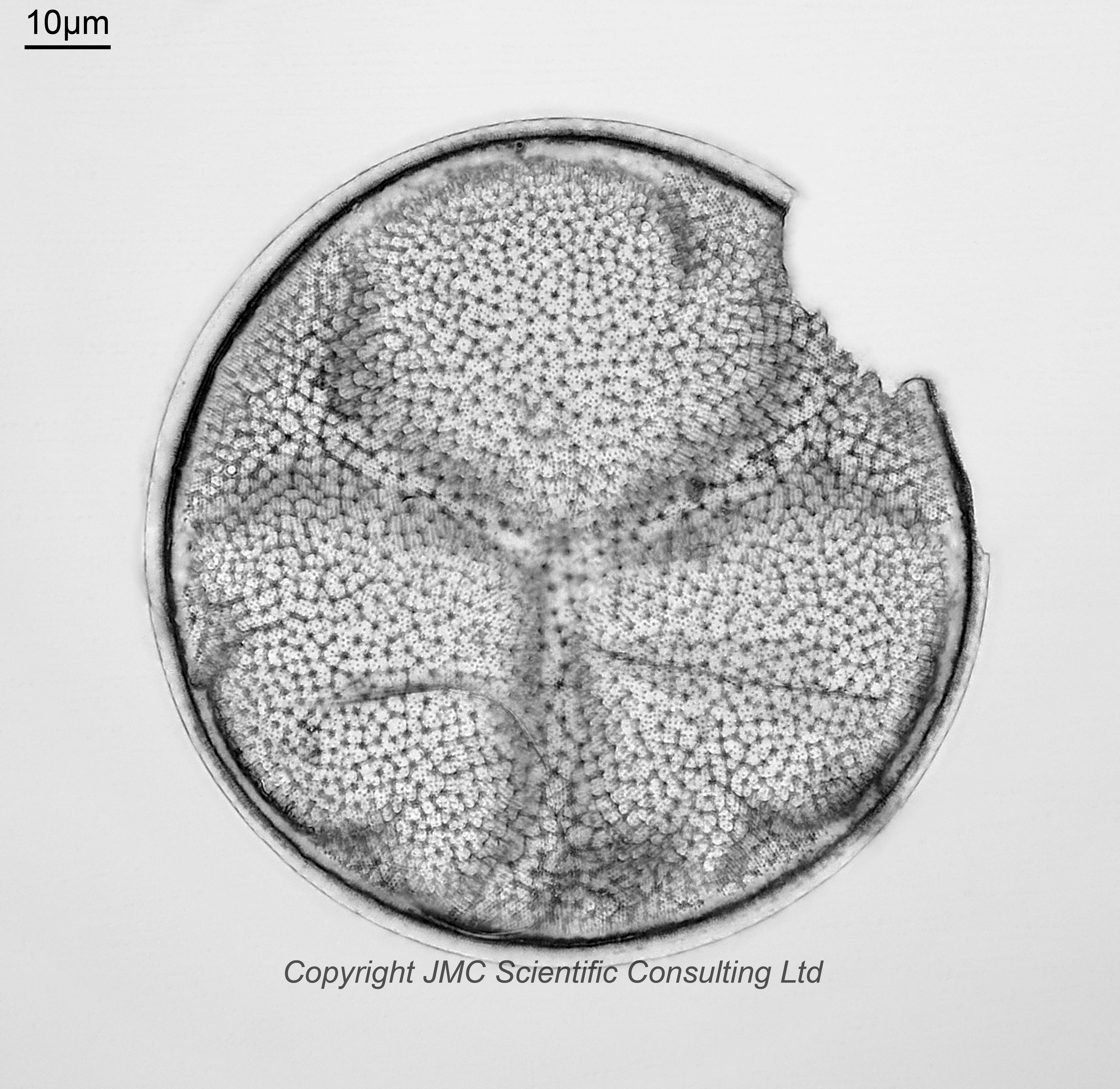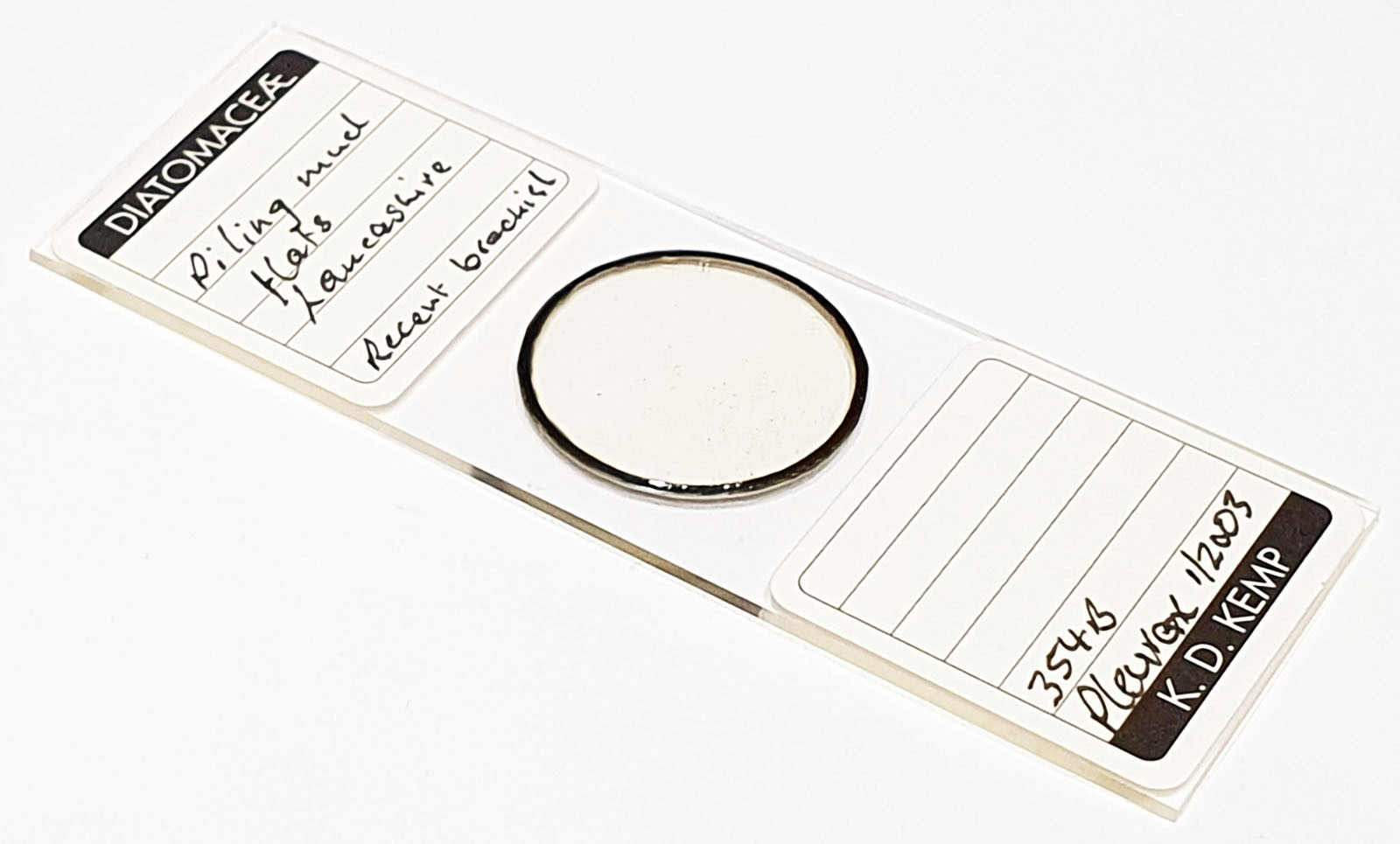





A strew slide from Piling Mud Flats, Lancashire. Recent brackish. A few different species present, including lots of Surirella sp. and some Cerataulus smithii. Prepared by Klaus Kemp. Mounted in Pleurax and dated January 2003. Olympus BHB microscope using 450nm LED light. 63x Leitz Pl Apo 1.4 objective, oil immersion. Olympus Aplanat Achromat condenser, oil immersion, brightfield lighting. 2.5x Nikon CF PL photoeyepiece. Monochrome converted Nikon d850 camera. Stacks prepared in Zerene (Pmax).
Odontella granulata. End on view, and name suggested by René van Wezel. This matches well with the other images I’ve been able to find.
Actinoptychus sp.? The closest I have so far been able to find are some images in Schmidt’s Atlas, Plate 29, Figures 5-7 which says “Gorleston, Suffolk, (Kitton), Regenerationshüllen, 6 und 7 mit darunterliegender Schale, welche bei 7 auf jedem Felde einen Precess trägt; darum nicht auf Actinoptychus undulatus, sondern auf Actinoptychus areolatus zu bezeihen.” Translation (Google Translate) “Gorleston, Suffolk, (Kitton), regeneration cases, 6 and 7 with an underlying cup bearing a precess at 7 on each field; therefore not to refer to Actinoptychus undulatus, but to Actinoptychus areolatus.”. So probably an Actinoptychus, but not sure which one. If I find out more I’ll update this post. After discussion with René van Wezel, this looks to be an Actinoptychus initial cell (Erstlingzelle), likely A. senarius. These cells are part of the ‘autosporulation’ cycle for cell size restauration. An example of one of these is shown here.